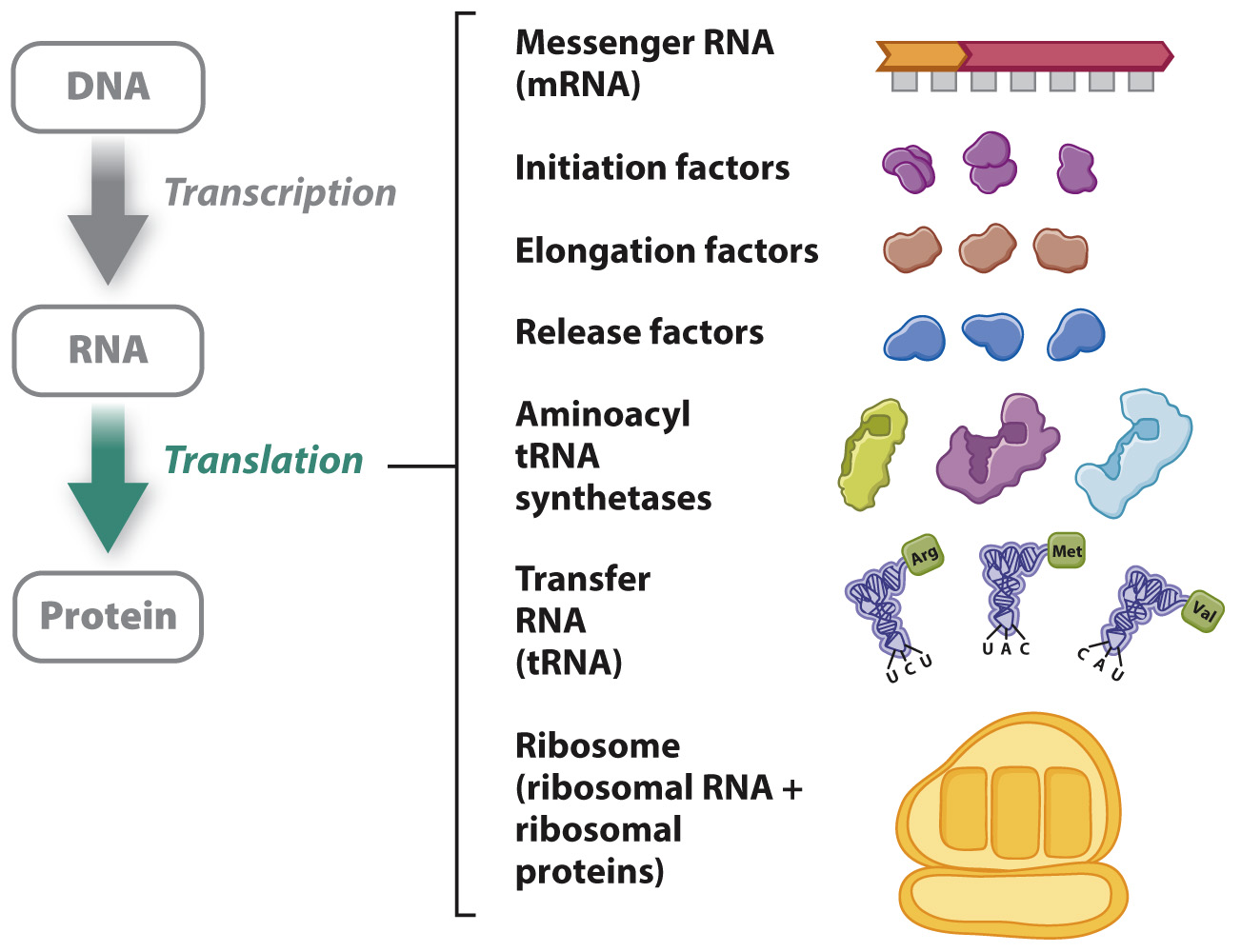The three-dimensional structure of a protein determines what it can do and how it works, and the immense diversity in the tertiary and quaternary structures among proteins explains their wide range of functions in cellular processes. Yet it is the sequence of amino acids along a polypeptide chain—its primary structure—that governs how the molecule folds into a stable three-dimensional configuration. How is the sequence of amino acids specified? It is specified by the sequence of nucleotides in the DNA, in coded form. The decoding of the information takes place according to the central dogma of molecular biology, which defines information flow in a cell from DNA to RNA to protein (Fig. 4.11). In transcription, the sequence of bases along part of a DNA strand is used as a template in the synthesis of a complementary sequence of bases in a molecule of RNA, as described in Chapter 3. In translation, the sequence of bases in an RNA molecule known as messenger RNA (mRNA) is used to specify the order in which successive amino acids are added to a newly synthesized polypeptide chain.

